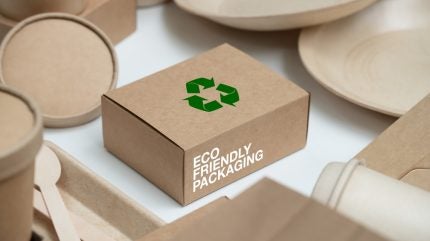
As the packaging industry continues its shift towards sustainability, new technologies are emerging to shape the future of eco-friendly packaging.
Klim Komarov provides valuable insights into the advancements driving this transformation. Klim Komarov established Woopack, a high-tech firm specialising in the development of advanced packaging solutions through R&D and targeted investments.
From biodegradable materials to smart packaging systems, these innovations are set to address environmental concerns while delivering cost-efficient solutions.
Biodegradable materials and nanotechnology
Komarov highlights the critical role biodegradable materials are playing in the evolution of packaging. “The future of eco-friendly packaging will be shaped by innovations in biodegradable materials, enhanced barrier properties, and smart packaging systems,” he explains.
Bioplastics derived from renewable sources, such as corn starch and sugarcane, are becoming more widespread, reducing the environmental impact of traditional plastics.
Regulatory pressure on single-use plastics is a key driver behind the increasing adoption of these sustainable alternatives.
Nanotechnology is also at the forefront of improving packaging materials. According to Komarov, “Advancements in nanotechnology are developing thinner, yet more effective, materials that reduce waste without compromising performance.”
These materials offer a dual benefit of cost-efficiency and extended product shelf life, making them attractive for businesses and investors alike.
Smart packaging and IoT integration
Smart packaging technologies are another significant area of focus, offering benefits that extend beyond sustainability. “Smart packaging technologies, such as RFID and NFC, enhance supply chain transparency and resource optimisation,” says Komarov.
These innovations enable real-time tracking and monitoring, helping companies reduce waste and optimise their logistics. As a result, smart packaging aligns with the growing consumer demand for transparency and sustainability in products.
Komarov also highlights the importance of integrating AI and IoT in packaging processes to further enhance sustainability. “AI helps streamline supply chain logistics, ensuring the right materials are used at the right time, reducing overproduction and excess packaging.”
Additionally, IoT-enabled packaging allows for better tracking and monitoring during transportation and storage, thereby minimising spoilage and reducing the need for redundant packaging layers.
Energy-efficient manufacturing and circular systems
Innovative manufacturing processes are helping to reduce the environmental footprint of packaging production.
Komarov points to cold forming and 3D printing as two technologies with significant potential. “Cold forming reduces energy consumption by eliminating heat in packaging processes, lowering production costs while decreasing the environmental footprint,” he explains.
Meanwhile, additive manufacturing, or 3D printing, allows for precise production runs with minimal waste, offering a flexible and sustainable approach to innovation.
Recycling technologies are also playing a crucial role in developing circular packaging systems. “Recycling technologies are essential in supporting the circular economy by keeping materials in use for longer,” says Komarov.
He emphasises the importance of adopting durable, recyclable, and repairable packaging designs to help companies reduce waste and cut costs over time.
However, he notes that challenges remain in improving consumer education and recycling infrastructure to handle newer, sustainable materials effectively.
The takeaway
As technological advancements continue to evolve, the future of eco-friendly packaging looks promising.
From biodegradable materials and nanotechnology to smart packaging systems and energy-efficient manufacturing, these innovations offer scalable solutions for reducing environmental impact while meeting consumer demands.
Regulatory pressures and shifting market expectations are further accelerating the adoption of sustainable practices, presenting opportunities for companies to stay ahead of the curve.




